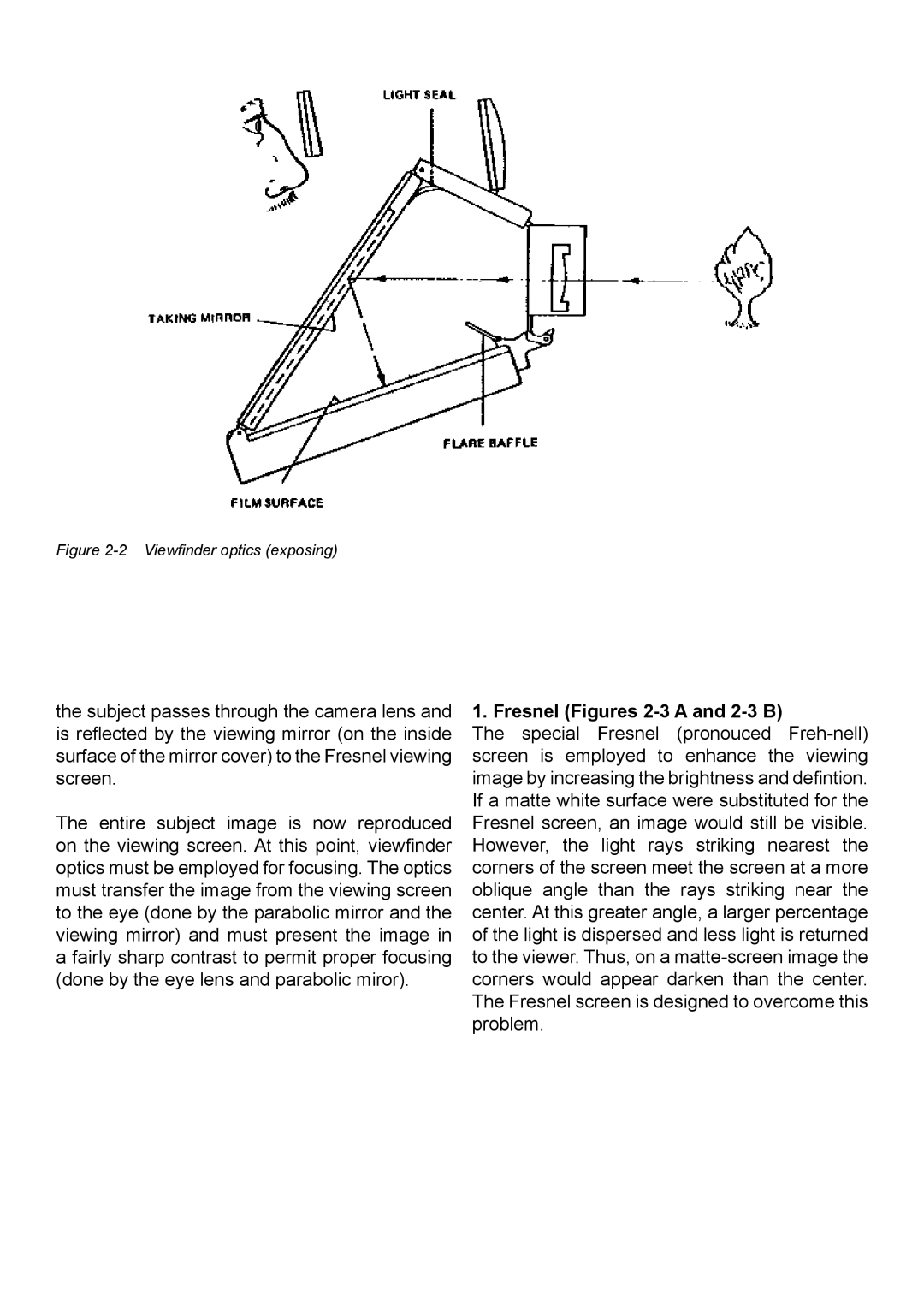
Figure 2-2 Viewfinder optics (exposing)
the subject passes through the camera lens and is reflected by the viewing mirror (on the inside surface of the mirror cover) to the Fresnel viewing screen.
The entire subject image is now reproduced on the viewing screen. At this point, viewfinder optics must be employed for focusing. The optics must transfer the image from the viewing screen to the eye (done by the parabolic mirror and the viewing mirror) and must present the image in a fairly sharp contrast to permit proper focusing (done by the eye lens and parabolic miror).
1. Fresnel (Figures 2-3 A and 2-3 B)
The special Fresnel (pronouced
